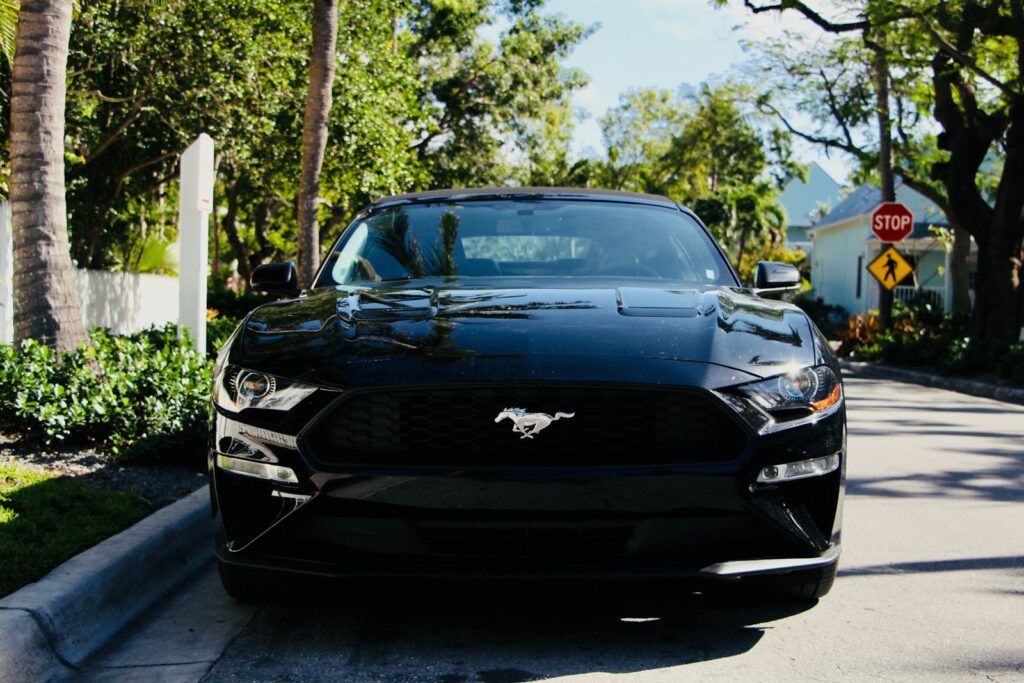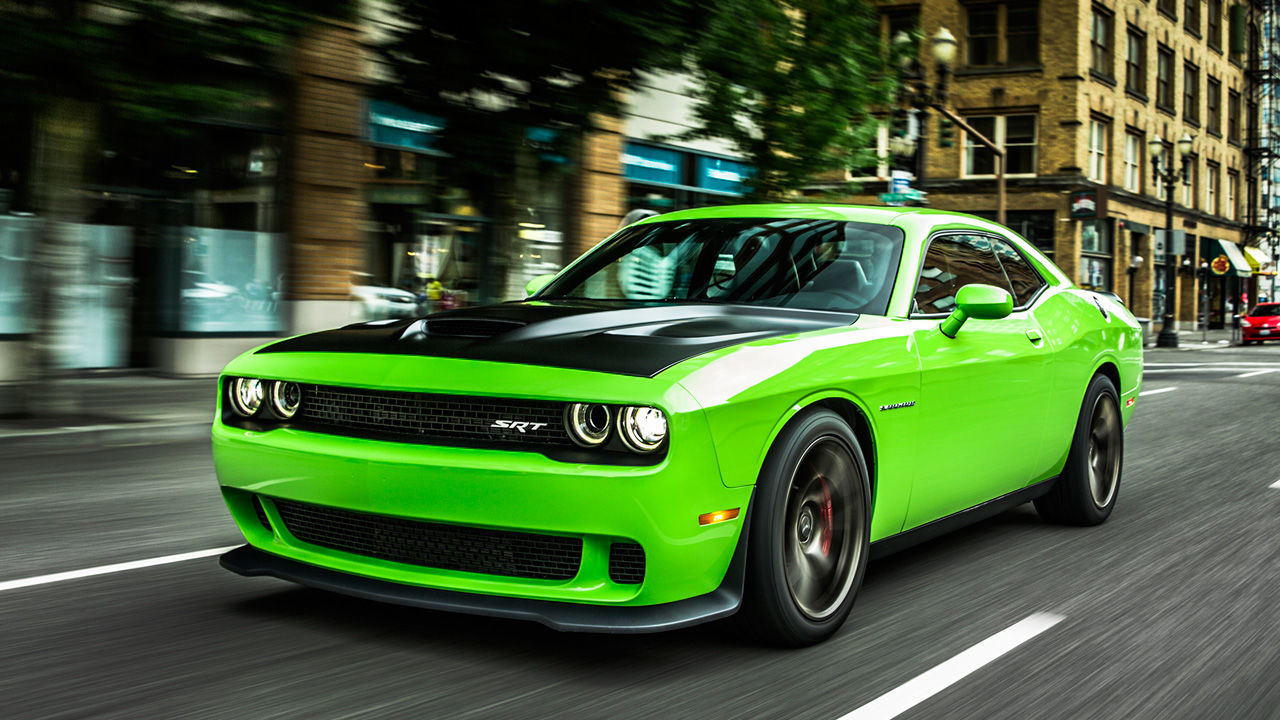
For anyone who grew up with a passion for cars in the ’70s or ’80s, the family station wagon was often viewed with a mixture of necessity and perhaps a touch of disdain. It was the ubiquitous grocery-getter, the unsung hero of countless road trips, and, let’s be honest, sometimes a bit ordinary. Yet, in a remarkable twist of automotive destiny, these once-commonplace vehicles have transcended their humble origins to become truly vaunted and desirable automobiles among today’s discerning enthusiasts. This isn’t just a fleeting trend; it’s a sentiment echoed across various online forums, vibrant subreddits, and through the thoughtful analyses of respected automotive journalists and writers on popular websites and blogs.
Indeed, despite this burgeoning popularity among those who truly appreciate talk of horsepower, intricate engineering, and forced induction, the wagon has, regrettably, fallen out of favor with the broader new car-buying public. The modern-day equivalent of the family hauler is now almost exclusively the crossover or SUV. While these contemporary vehicles, sometimes perceived as a generic scourge, share some fundamental traits with their wagon predecessors—like seating for seven and ample cargo space—they often lack one crucial element: soul. They frequently offer a driving experience that insulates occupants from the road, detaching them from the pure joy of motoring.
This is precisely why vintage wagons continue to hold such a special, irreplaceable spot for a particular cohort of enthusiasts. Even if these beloved machines are no longer found gracing dealer lots, their legacy endures. In an alternate universe, perhaps the station wagon never truly faded, continuing its evolution. But back in our reality, the 1980s offered a fantastic array of wagons that, for one reason or another, eventually rolled off the assembly line for the last time. We’ve meticulously curated a list of 11 such exceptional wagons from that iconic decade, each one a testament to why the wagon format is so remarkable and why we so deeply yearn for their return.

1. **Mitsubishi Galant (Legnum) VR-4**Mitsubishi, for a time, was a brand synonymous with rally-bred performance and innovative engineering, and the Galant VR-4 stands as a shining example of this ethos. While the Galant VR-4 sedan began production in 1987, it was quickly followed by the Legnum station wagon version. This was not merely a practical family hauler; Mitsubishi crafted one of the most aggressive and sporty-looking wagons of its era, a true wolf in sheep’s clothing that subtly hinted at its performance pedigree without being overly ostentatious.
Under the hood, the Legnum VR-4 packed a formidable punch, featuring a 2.5-liter twin-turbocharged V6 engine that churned out an impressive 300 horsepower. This power plant was a testament to Mitsubishi’s engineering prowess, delivering exhilarating acceleration and a driving experience far removed from the typical family wagon. It was a vehicle that could effortlessly tackle the daily commute or embark on spirited backroad adventures with equal aplomb, blurring the lines between practicality and raw performance.
What truly set the Galant VR-4, and by extension the Legnum wagon, apart was Mitsubishi’s brilliant application of its rally pedigree. The very same engineers who honed the brand’s world-renowned rally systems were tasked with developing the all-wheel-drive system for the Galant VR-4. This advanced AWD system provided phenomenal grip and enhanced performance, transforming the wagon into a remarkably capable and confidence-inspiring machine in various driving conditions. It truly created one of the best station wagons of the 1980s, offering a unique blend of utility and motorsport-derived exhilaration that few rivals could match.
As the decades have passed, these remarkable Legnum VR-4 wagons have become increasingly scarce, a testament to their enduring appeal and the sheer joy they provided to their owners. Their rarity only adds to their allure, ensuring that the Legnum VR-4 is destined to become a highly sought-after collectible in the coming years. For enthusiasts who appreciate understated performance and rally-bred technology in a practical package, the Legnum VR-4 remains a truly cherished and memorable vehicle, a beacon of Mitsubishi’s golden age of innovation.
Car Model Information: 2022 Lincoln Aviator Reserve AWD
Caption: Tokyo Motor Show
Name: Mitsubishi Galant VR-4
Production: 1987–2002
Assembly: Flagicon,Mitsubishi Motors#Locations,Okazaki, Aichi
BodyStyle: sedan (car)
Platform: Mitsubishi Galant
Layout: Front-engine, four-wheel-drive layout,four-wheel drive
Length: 456cm-466cm
Engine: straight-4,turbocharger
Transmission: Four-wheel drive
Successor: Mitsubishi Lancer Evolution
Related: Mitsubishi Galant
Class: Sports Car
Categories: 1980s cars, 1990s cars, 2000s cars, All-wheel-drive vehicles, All articles with unsourced statements
Summary: The Mitsubishi Galant VR-4 (Viscous Realtime 4WD) was the range-topping version of Mitsubishi Motors’ Galant model, available in the sixth (1987–1992), seventh (1992–1996) and eighth (1996–2002) generations of the vehicle. Originally introduced to comply with the new Group A regulations of the World Rally Championship, it was soon superseded as Mitsubishi’s competition vehicle by the Lancer Evolution, and subsequently developed into a high-performance showcase of the company’s technology.
Get more information about: Mitsubishi Galant VR-4
Buying a high-performing used car >>>
Brand: Mitsubishi Model: Galant VR-4
Price: $39,000 Mileage: 66,933 mi.
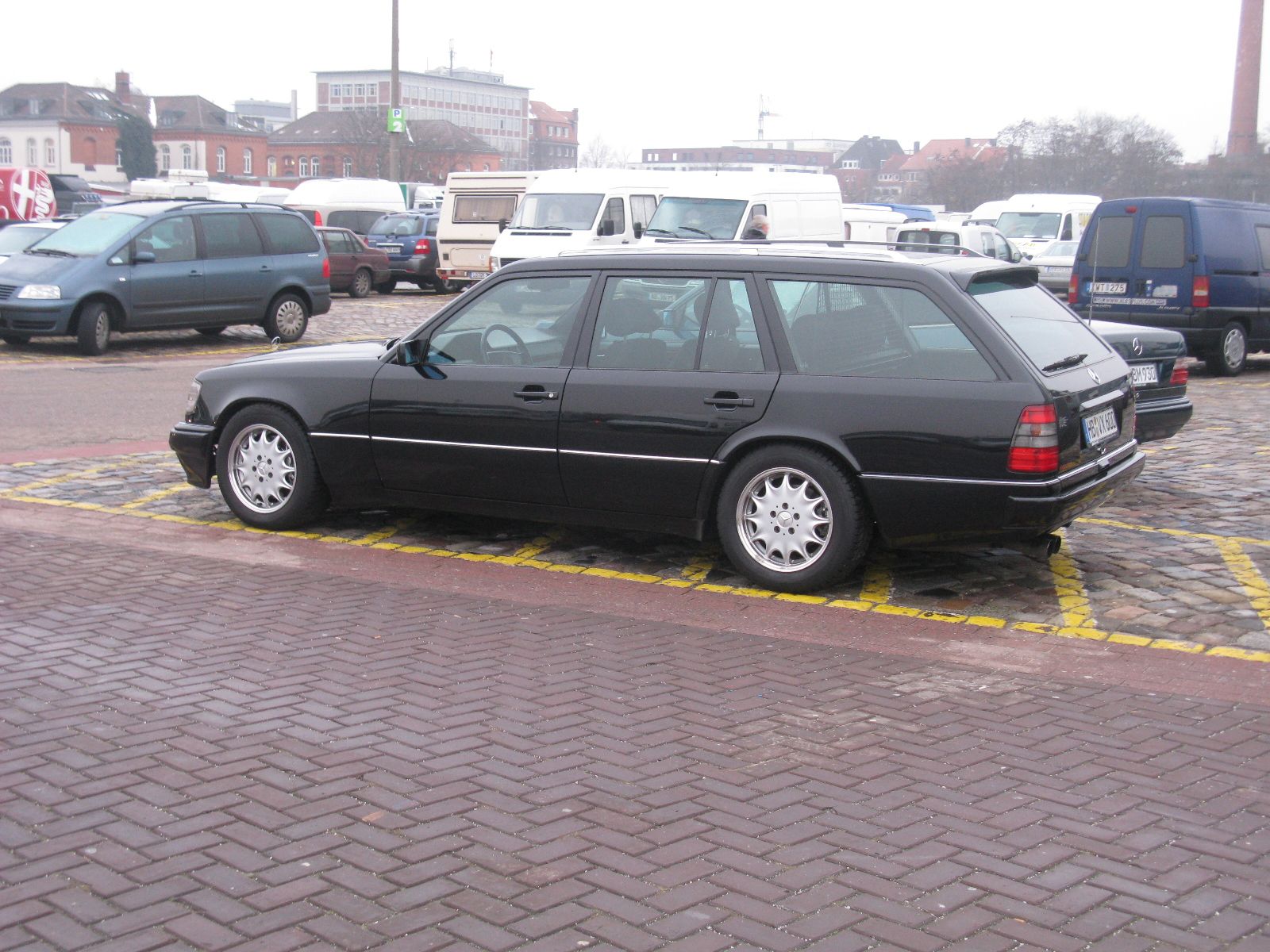
2. **Mercedes-Benz S124**When we talk about exciting and exquisitely engineered station wagons, Mercedes-Benz frequently enters the conversation, and for good reason. The S124, derived directly from the renowned W124 sedan in 1984, is a prime example of the German manufacturer’s commitment to quality and luxurious practicality. At its debut, the W124 platform was celebrated as one of Mercedes-Benz’s finest products, setting new benchmarks for build quality, refinement, and durability, and the S124 wagon inherited all of these stellar attributes.
Initially, under the hood of models like the 300TE or 300TD, you would find a robust 3.0-liter straight-six engine. The ‘TE’ designation indicated a gasoline engine, while ‘TD’ denoted a turbodiesel model, offering buyers a choice depending on their preference for power delivery and fuel economy. These S124 wagons began to roam the streets new from dealers starting in 1986 and continued their impressive run until 1996 when the E-Class eventually succeeded the platform. They swiftly established a reputation for being remarkably robust platforms, engineered to exceptionally high standards, all while delivering a sublime and thoroughly luxurious driving experience.
Part of what makes the S124 such an enduring icon is Mercedes-Benz’s unwavering dedication to over-engineering. From its inception, the S124 was built with extraordinary quality as the paramount goal, sparing no expense in achieving a level of refinement and durability that was truly exceptional. This meticulous attention to detail resulted in a vehicle that not only felt incredibly solid and secure but also aged with remarkable grace, earning it the fond remembrance of many and often the unofficial title of “among the best Mercedes ever built.” Some might even go so far as to claim it’s the perfect car.
Today, while Mercedes-Benz continues to offer wagons in its contemporary lineup, there’s a distinct feeling that no modern Benz quite captures the essence of the S124. Many enthusiasts yearn for a return of that uncompromising quality and driver-centric design. Imagine if Mercedes could somehow unearth the original tooling from the factory assembly lines and begin producing identical S124 wagons today—it’s safe to say they would find immediate sales. With a few thoughtful modern appointments for navigation and Bluetooth, perhaps, but crucially retaining the beloved analog gauges and physical buttons and controls, it would be a dream come true for many. Mercedes-Benz might not explicitly recognize it, but this is precisely what a dedicated segment of the motoring public truly desires.
Read more about: 12 Ridiculously Rare Wagons That Outshine Muscle Cars: An Enthusiast’s Deep Dive
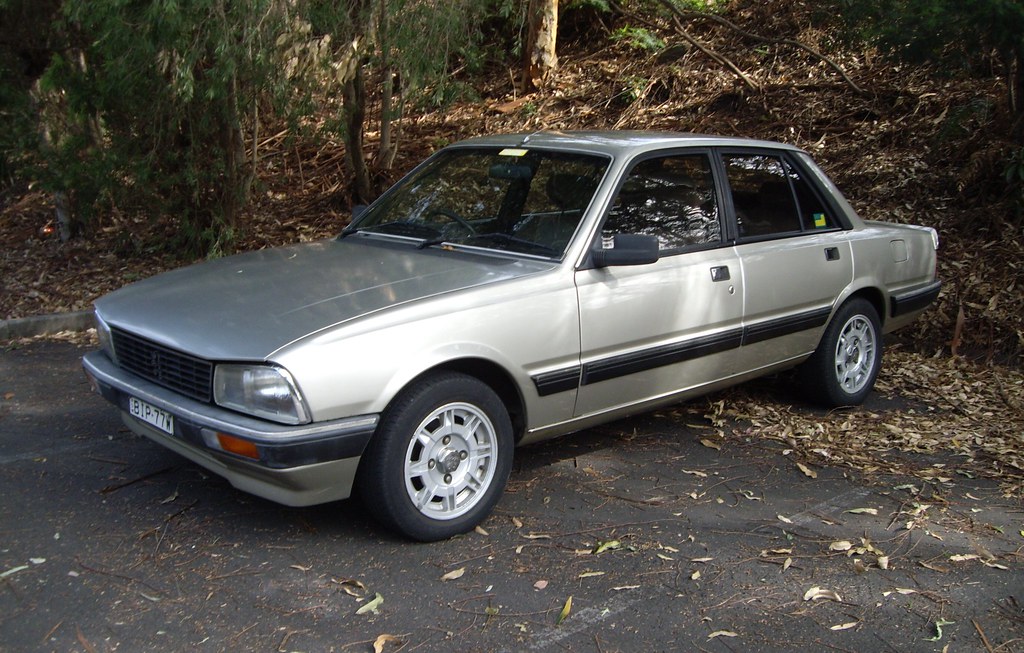
3. **Peugeot 505**During the tumultuous decades of the 1980s and early 1990s, the French marque Peugeot found itself in a challenging battle to maintain a significant presence within the competitive United States automotive market. Despite these struggles, the Peugeot 505 station wagon emerged as a resilient contender, ultimately becoming the marque’s final model to be sold in North America. To its credit, the 505 wagon put up a remarkably good fight, carving out its niche against stiff competition, particularly from the well-established Swedish brand, Volvo, as the 1980s progressed.
Peugeot, in its determined effort to keep the 505 relevant and appealing in the market, explored a variety of strategies. One significant move was making a wide range of engines available to American consumers, allowing for greater customization and catering to diverse driving preferences. Furthermore, the company introduced a remarkable long-wheelbase SW8 version, which was a notable addition to the range. This particular variant offered an abundance of interior space, specifically designed to accommodate up to eight passengers, making it an exceptionally practical choice for larger families or those requiring significant people-hauling capacity.
The 505 wagon played a crucial role in keeping Peugeot afloat in the United States during its waning years in the market. It presented itself as a tamer, more comfortable alternative compared to some of the V8-powered, more boisterous American monsters that were still prevalent on the roads. Its European refinement, comfortable ride, and thoughtful design appealed to a segment of buyers looking for something distinctly different from the domestic offerings, emphasizing efficiency and a certain understated elegance over brute force. It exemplified the brand’s commitment to creating sophisticated yet practical vehicles that resonated with a particular sensibility.
While the Peugeot 505 eventually made its exit from the North American stage, its legacy as a capable and comfortable family wagon endures. It’s a testament to the brand’s efforts to adapt and compete in a challenging environment, offering a unique blend of French engineering and practical utility. For those who experienced its comfort and distinct character, the 505 wagon remains a fondly remembered vehicle, a tangible link to Peugeot’s earnest, if ultimately unsuccessful, bid for sustained success in the American automotive landscape of the 1980s.
Read more about: Beyond the Bulletproof: A Curious Journey Through 14 Iconic State Carriages of the World
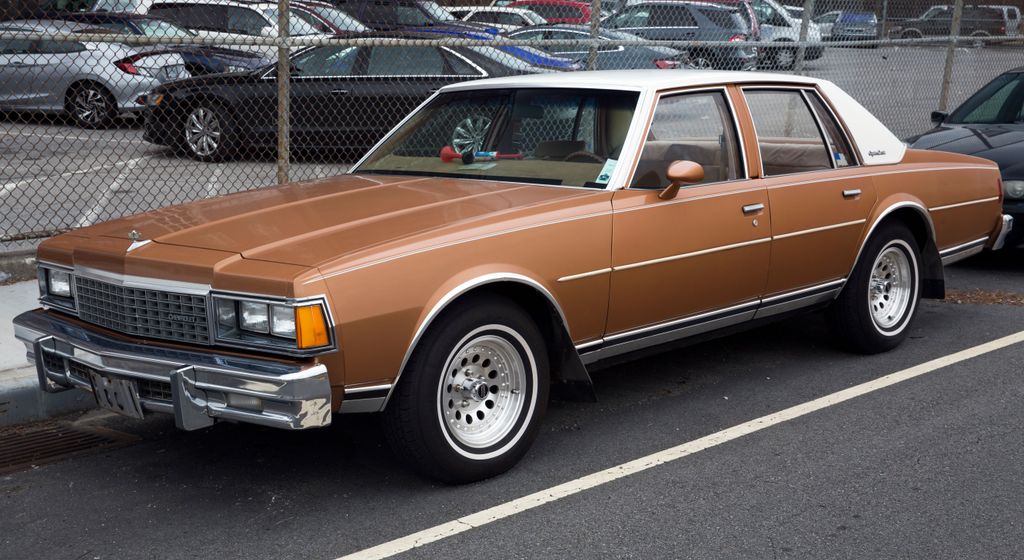
4. **Chevrolet Caprice Classic**Chevrolet’s full-size station wagon of the 1980s, the Caprice Classic, possessed a remarkably long lineage, tracing its roots back to 1977. This was the year General Motors initiated a significant downsizing program for its B-body cars, which included a reduction in the wheelbase from a substantial 125 inches to a more manageable 116 inches. Despite this scaling back, the Caprice Classic wagon retained its full-size presence and continued to be a staple of American family transportation, embodying a blend of traditional spaciousness with more contemporary dimensions for its era.
As the calendar turned to 1980, Chevrolet embarked on a redesign, revising the front-end styling to give the Caprice Classic a refreshed aesthetic that aligned with the new decade. Crucially, throughout these updates, the brand remained committed to preserving the luxury feel that the Caprice Classic nameplate implied. This dedication to luxury manifested in a variety of thoughtful details, including the addition of full-wheel covers, which replaced the more basic hubcaps, a distinctive hood ornament, elegant exterior brightwork, prominent emblems, and even the integration of a ‘Quiet Sound Group’ system, among numerous other refinements. These elements collectively aimed to enhance the vehicle’s premium appeal and driving comfort.
Under the hood, buyers had several engine options, reflecting the diverse needs and preferences of American drivers. The standard engine for the Caprice Classic wagon was a 120 hp 4.4-liter two-barrel Chevrolet V8, providing adequate power for everyday family duties. For those seeking a bit more gusto, a more potent option was available: a 5.0-liter Chevrolet V8 featuring a four-barrel carburetor, which boosted horsepower to a respectable 155 hp. These V8 configurations underscored the Caprice Classic’s traditional American philosophy of comfortable cruising and robust towing capacity, even in a wagon format.
Chevrolet continued to refine the Caprice Classic, with another notable update arriving in 1986, ensuring its continued relevance in a rapidly evolving market. The Caprice Classic wagon, with its comfortable ride, generous interior space, and classic American styling, represented a bygone era of family transportation. It was a vehicle that effortlessly accommodated large families, handled extensive road trips with ease, and offered a quintessential ’80s domestic automotive experience. Its presence on the road was a common sight, a testament to its popularity and its role as a reliable workhorse for countless American households, solidifying its place in automotive history.
Car Model Information: 2022 Lincoln Aviator Reserve AWD
Name: Chevrolet Caprice
Caption: Chevrolet Caprice PPV
Manufacturer: unbulleted list
Production: unbulleted list
ModelYears: unbulleted list
Predecessor: unbulleted list
Class: Full-size car
Platform: unbulleted list
Layout: FR layout
Categories: 1970s cars, 1980s cars, 1990s cars, 2000s cars, 2010s cars
Summary: The Chevrolet Caprice is a full-size car produced by Chevrolet in North America for the 1965 through 1996 model years. Full-size Chevrolet sales peaked in 1965, with over a million units sold. It was the most popular car in the U.S. in the 1960s and early 1970s, which, during its production, included the Biscayne, Bel Air, and Impala.
Introduced in mid-1965 as a luxury trim package for the Impala four-door hardtop, Chevrolet offered a full line of Caprice models for the 1966 and subsequent model years, including a “formal hardtop” coupe and an Estate station wagon. The 1971 through 1976 models are the largest Chevrolets built. The downsized 1977 and restyled 1991 models were awarded Motor Trend Car of the Year. Production ended in 1996.
From 2011 until 2017, the Caprice nameplate returned to North America as a full-size, rear wheel drive police vehicle, a captive import from Australia, built by General Motors’s subsidiary Holden. The police vehicle is a rebadged version of the Holden WM/WN Caprice. The nameplate also had a civilian and police presence in the Middle East from 1999 until 2017, where the imported Holden Statesman/Caprice built by Holden was marketed as the Chevrolet Caprice in markets such as Saudi Arabia and the UAE.
Get more information about: Chevrolet Caprice
Buying a high-performing used car >>>
Brand: Chevrolet Model: Caprice Classic
Price: $39,000 Mileage: 66,933 mi.
Read more about: Remember the ’90s? These 11 Unkillable Economy Sedans Were the Absolute Albums of Reliability and the Commute.

5. **Volkswagen Quantum**In the diverse global automotive landscape, Volkswagen chose different names for its mid-size cars depending on the market. While known as the Passat and Santana across Europe and other international markets, it was the Volkswagen Quantum that made its debut on North American shores in 1982. This marked a significant generational leap for Volkswagen’s mid-size offering in the U.S., following its predecessor, the Dasher. The Quantum arrived with its top-of-the-range version, the GL5, a designation that notably hinted at the engine configuration beneath its hood.
The ‘five’ in GL5 denoted the number of cylinders in its engine: a 2.1-liter inline-five. While this engine configuration offered a distinctive sound and a certain smoothness, it only produced a modest 100 horsepower. This power output, unfortunately, made the Quantum wagon feel unnecessarily slow, a characteristic that perhaps dampened some of its potential appeal in a market often appreciative of stronger performance. Despite this limitation and a rather basic interior that prioritized functionality over overt luxury, the Quantum station wagon managed to sell in considerable numbers.
The Quantum represented a significant improvement over the Dasher, bringing more modern design, improved ride quality, and a more spacious interior to Volkswagen’s American lineup. Its clean, angular styling was emblematic of 1980s European design, offering a sophisticated alternative to many domestic offerings. Even though it began to feel somewhat outdated by 1988 as newer, more powerful rivals emerged, its reliable mechanicals and practical configuration ensured its continued presence on American roads and in driveways across the country.
For many, the Quantum wagon was a dependable daily driver, a sensible choice that embodied Volkswagen’s reputation for solid German engineering in an accessible package. It offered a practical solution for families needing cargo space and reasonable efficiency, all wrapped in a European-flavored design that stood out from the crowd. Though it might not have been a performance king or a luxury cruiser, its enduring sales figures speak to its quiet success as a reliable and functional family vehicle during the heart of the 1980s, reminding us of a time when practicality and understated design held significant value.
For anyone with a genuine appreciation for automotive history and the sheer ingenuity poured into vehicles, the 1980s represent a fascinating crossroads—a decade where practicality met nascent performance and evolving design. As we continue our deep dive into the iconic wagons that graced assembly lines and family driveways, we uncover more stories of innovation, resilience, and unique charm before these models eventually bowed out. These vehicles, often overshadowed by flashier counterparts, nevertheless carved out significant niches, leaving an indelible mark on enthusiasts and the broader automotive landscape. They remind us that true automotive appeal isn’t always about brute force, but often about a thoughtful blend of utility, comfort, and character.
Read more about: Buyer Beware: 15 Sedans That Won’t Make it to 80,000 Miles Without Costly Repairs
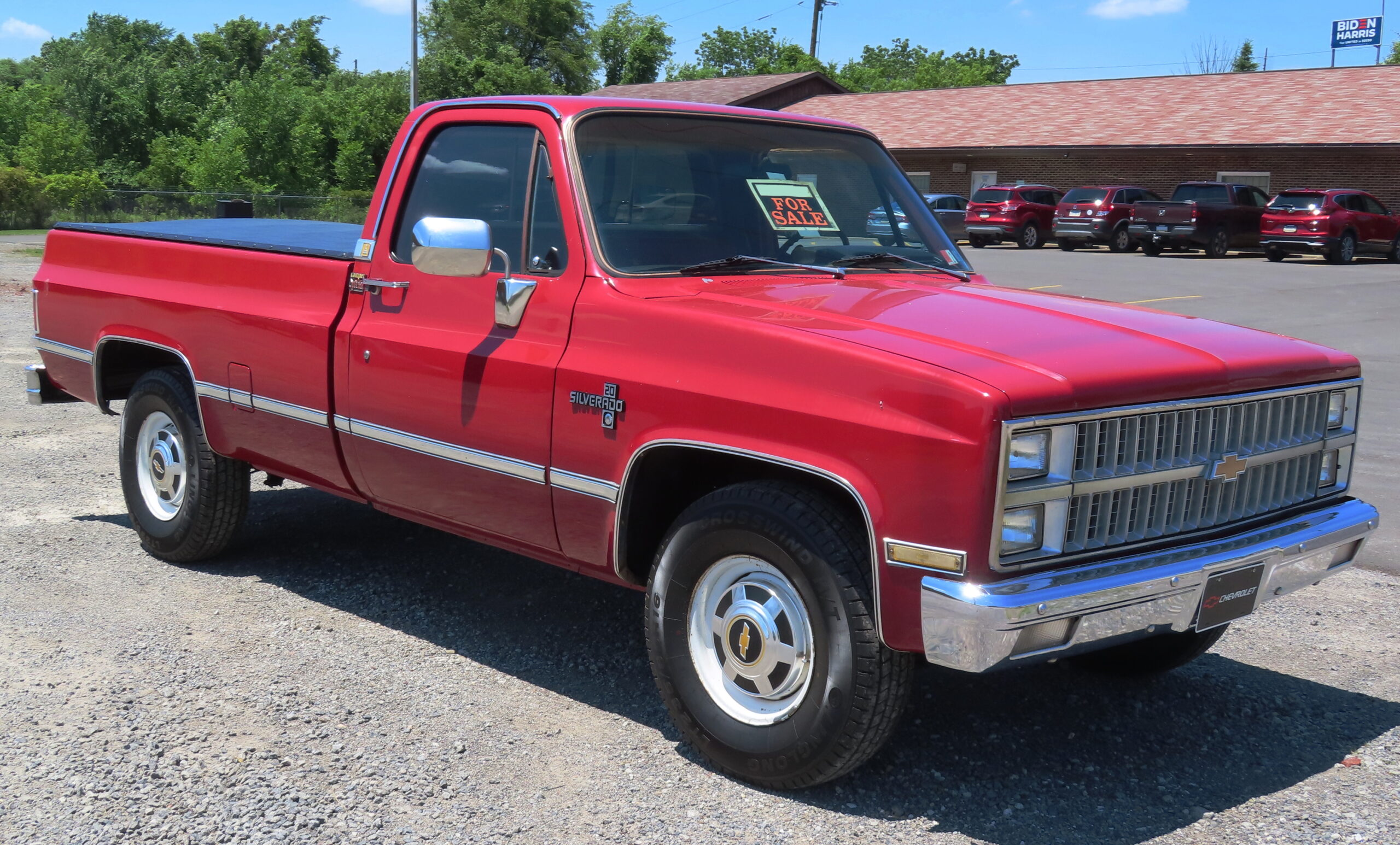
6. **Mercury Sable**The Mercury Sable emerged late in the 1980s, but its arrival was anything but understated. It quickly distinguished itself, effectively usurping the popularity of the Mercury Marquis, a wagon that had held sway through much of the 1970s. This shift marked a pivotal moment for Mercury, as the Sable brought a decidedly fresh perspective to the American family wagon, signaling a move towards more contemporary design philosophies. It wasn’t just a new model; it was a statement, a forward-looking vision for the practical family hauler.
A significant part of the Sable’s immediate appeal was its strikingly modern shape. This wasn’t merely an aesthetic choice; the sleek, aerodynamic contours were engineered with a clear purpose: enhanced fuel efficiency. In an era where rising fuel costs were a constant consideration for families, the Sable’s ability to offer both practical space and improved economy was a compelling proposition. Its smooth, rounded lines stood in stark contrast to the boxier designs that had long dominated the segment, presenting a sophisticated and efficient alternative.
Beneath its innovative sheet metal, the Sable offered a range of engine options to cater to diverse driving needs. Buyers could choose from a 3.0-liter SFi Vulcan V6, which delivered a respectable 140 horsepower and 160 lb-ft of torque, or opt for the larger 3.8-liter SFI Es V6, which also produced 140 horsepower but boasted a more robust 215 lb-ft of torque, providing a noticeable boost in pulling power. For a brief period in 1986, the GS model even offered a 2.5-liter CFI HSC inline-four, broadening its accessibility.
The Mercury Sable, despite its relatively short run compared to some predecessors, left an enduring legacy as a symbol of late-1980s American automotive design evolution. It successfully blended practicality with a vision of modernity, pushing the boundaries of what a family station wagon could look like and how efficiently it could operate. For many, it represented a compelling blend of utility and understated style, making it a fondly remembered staple of its era that showcased Mercury’s commitment to innovation.
Car Model Information: 2004 Mercury Sable LS Premium
Name: Mercury Sable
Manufacturer: Mercury (automobile)
Production: October 1985 – April 29, 2005,June 2007 – May 21, 2009
Class: Mid-size car
Predecessor: Mercury Marquis
Successor: Ford Taurus (sixth generation)
ModelYears: 1986–2005,2008–2009
Categories: 1990s cars, 2000s cars, All articles with unsourced statements, Articles with short description, Articles with unsourced statements from August 2024
Summary: The Mercury Sable is a range of automobiles manufactured and marketed by the Mercury brand of Ford Motor Company. Introduced on December 26, 1985, as the replacement for the Mercury Marquis, the Sable marked the transition of the mid-sized Mercury product range to front-wheel drive.
Over its production span, the Sable was Mercury’s badge-engineered counterpart to the Ford Taurus, below the Grand Marquis in the Mercury range. From the 1986 to 2005 model years, it was produced as a mid-sized, four-door sedan and five-door station wagon. For 2006, the Sable was replaced by the full-sized Montego and mid-sized Milan. It was reintroduced for 2008 as a full-sized car, offered as a four-door sedan.
Because of declining sales, the Sable was discontinued after the 2009 model year, leaving no Mercury counterpart for the sixth-generation Taurus. The final Sable was produced on May 21, 2009; in total, 2,112,374 Sables were produced during its 1985 to 2005 production run.
Get more information about: Mercury Sable
Buying a high-performing used car >>>
Brand: Mercury Model: Sable
Price: $4,888 Mileage: 96,815 mi.
Read more about: Seriously, Where Did They Go? The Fascinating Vanishing Act of 14 Legendary Auto Brands
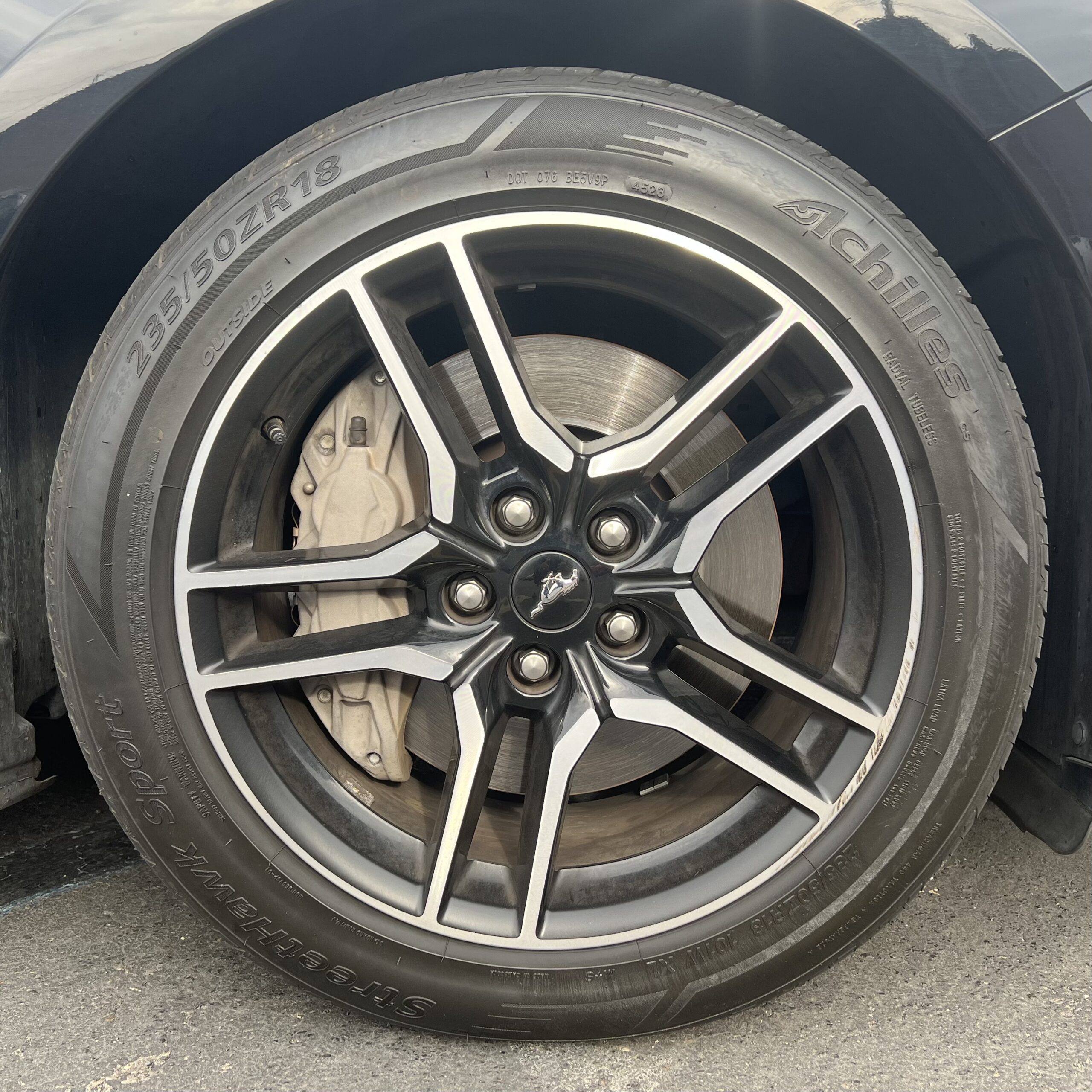
7. **Ford Taurus**Hot on the heels of its sibling, the Mercury Sable, Ford introduced its own interpretation of the modern family hauler: the new Ford Taurus station wagon. Launched in 1986, the Taurus shared much of its design DNA with the Sable, featuring the same revolutionary aerodynamic styling that had turned heads and redefined expectations for mainstream American vehicles. It was an ambitious move by Ford to inject fresh life into its lineup, offering both sedan and wagon variants designed to appeal to a broad spectrum of buyers.
Initially, the Taurus wagon enjoyed a period of robust sales, appealing to families who valued its blend of contemporary styling, practical space, and comfortable ride. However, as the automotive landscape shifted into the 1990s, the wagon segment began to face increasing pressure from the burgeoning popularity of SUVs and minivans. Consequently, Ford made the strategic decision to discontinue the station wagon from its range, choosing instead to focus its resources on the more successful Taurus sedan version.
While the Taurus sedan consistently outsold its wagon counterpart, the wagon’s sales figures, though lower, were by no means negligible. Ford notably sold the most units of the Taurus wagon in 1987, reaching 96,201 examples, a significant number that underscored its appeal to a dedicated segment of the market. This figure, while dwarfed by the 278,562 sedans sold in the same year, still affirmed the wagon’s value proposition and its role in many American households.
Performance-wise, the Taurus wagon was no slouch, particularly when equipped with the capable 140 horsepower 3.0-liter Vulcan V6 engine. This powerplant provided ample motivation for family duties and highway cruising, ensuring that the wagon delivered a thoroughly competent and reliable driving experience. Its departure from the lineup marked the end of an era for Ford’s mainstream station wagons, leaving enthusiasts to ponder what might have been if the segment had continued its strong trajectory.
Car Model Information: 2014 Ford Taurus SEL
Name: Ford Taurus
Caption: 2010 Ford Taurus Limited
Manufacturer: Ford Motor Company
Production: October 1985 – October 2006,May 2007 – March 2019
ModelYears: 1986–2019 (2007 sold only to fleets)
Class: Mid-size car
Layout: Transverse engine,front-engine, front-wheel drive,Transverse engine,front-engine, all-wheel drive
Predecessor: Ford LTD (North America)
Successor: Ford Taurus X
Categories: 1980s cars, 1990s cars, 2000s cars, 2010s cars, All-wheel-drive vehicles
Summary: The Ford Taurus is an automobile that was manufactured and marketed by the Ford Motor Company in the United States from 1985 to 2019. From 1985 to 2009, Ford marketed the Taurus alongside its rebadged variant, the Mercury Sable. Four generations of the high-performance version (named the Ford Taurus SHO) were also manufactured from 1988-1999 and 2009-2019.
The original Taurus was a milestone for Ford and the American automotive industry, as the first automobile at Ford designed and manufactured using the statistical process control ideas brought to Ford by W. Edwards Deming, a prominent statistician consulted by Ford to bring a “culture of quality” to the enterprise. The Taurus had an influential design that introduced new features and innovations.
In the late 1990s and early 2000s, sales of the Taurus declined as it lost market share to Japanese mid-size sedans and as Ford shifted resources towards developing SUVs. The Taurus was withdrawn after the 2007 model year, with production ending on October 27, 2006. As part of a model line revision, the Taurus and the larger Ford Crown Victoria were to be replaced with the full-size Five Hundred and mid-size Fusion sedans; the Taurus station wagon was replaced with the Ford Freestyle wagon, branded as a crossover SUV. During the 2007 Chicago Auto Show, the nameplates of the Taurus and Sable were revived, intended as 2008 mid-cycle revisions of the Five Hundred. The Freestyle was renamed the Ford Taurus X. For the 2010 model year, Ford introduced the sixth-generation Taurus, marking a more substantial model update, alongside the revival of the Taurus SHO; in 2013, the Ford Police Interceptor Sedan was introduced as a successor for its long-running Crown Victoria counterpart.
From 1985 to 2007, the Taurus was a mid-size car, offering front-wheel drive. Initially built on the DN5 platform (renamed the DN101 platform in 1995 and the D186 platform in 1999), the Taurus became a full-size car in 2007, adopting the Volvo-derived D3 platform, offering front- or all-wheel drive. The Taurus was produced as a four-door sedan through its entire production, with a five-door station wagon offered from 1986 to 2005.
All generations of the Taurus were assembled by Chicago Assembly on Chicago’s South Side. Prior to its 2006 closure, Atlanta Assembly also produced both the Taurus and Sable. From its 1985 launch to its initial withdrawal following the 2007 model year, Ford assembled 7,519,919 examples of the Taurus. The fifth best-selling Ford nameplate in North America, the Taurus has been surpassed only by the F-Series, Escort, Model T, and Mustang. Between 1992 and 1996, the Taurus was the best-selling car nameplate in the United States, overtaken by the current title holder in 1997, the Toyota Camry.
Get more information about: Ford Taurus
Buying a high-performing used car >>>
Brand: Ford Model: Taurus
Price: Not Priced Mileage: 169,210 mi.
Read more about: Remember the ’90s? These 11 Unkillable Economy Sedans Were the Absolute Albums of Reliability and the Commute.
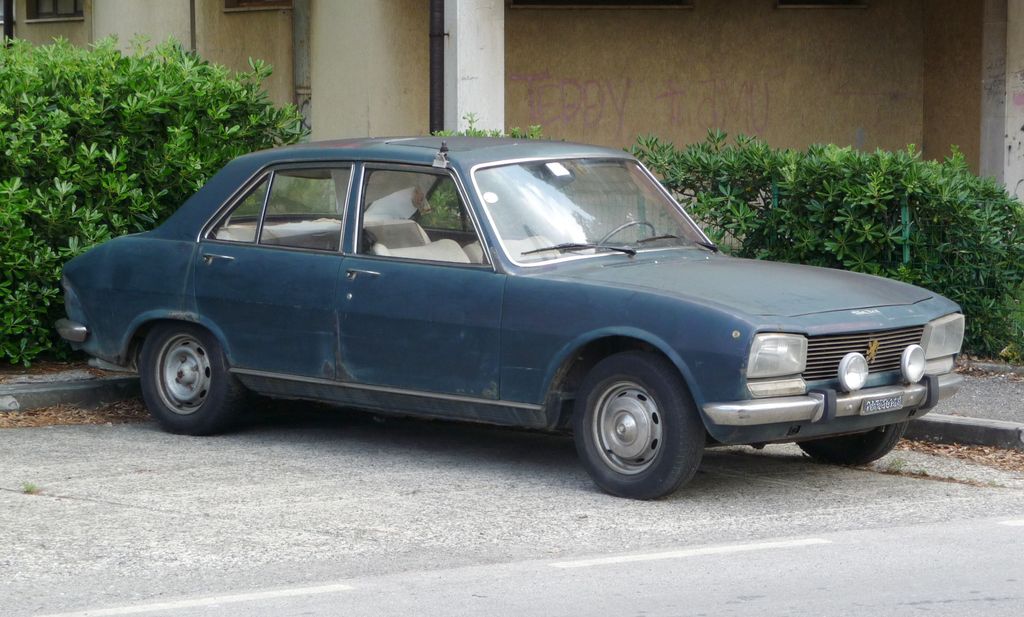
8. **Peugeot 504**Peugeot, a marque with a rich and storied history, once stood as one of the world’s leading automotive manufacturers. This was particularly true as the 1980s dawned, a decade that saw the enduring presence of the Peugeot 504. This classic French vehicle, renowned for its robustness and elegance, enjoyed a lengthy production run from 1968 to 1983, a remarkable span that saw it remain largely within a single generation, a testament to its timeless design and engineering integrity.
As the 1980s progressed and the newer 505 model made its debut, Peugeot began to strategically scale back production of the venerable 504. However, the wagon variant, affectionately known as the 504 Break, continued to roll off the assembly lines until the very end of 1983. Its extended availability reflected its immense appeal, which had been significantly bolstered by the oil crises of the 1970s. These economic shifts prompted a widespread consumer demand for affordable, practical family cars that also offered generous cargo space, a niche the 504 Break perfectly filled.
The 504 Break’s success was not just a matter of timing; it was built on a foundation of exceptional durability and comfort. Its robust construction and smooth, compliant ride quality made it an ideal vehicle for both European city streets and the more challenging terrains often found in Africa, where it garnered a legendary reputation for reliability. This unwavering dependability, coupled with its spacious interior, solidified its place as a cherished family workhorse across diverse continents.
Today, the Peugeot 504, particularly in its wagon form, is an exceptionally rare sight, and finding one in good condition is an even greater challenge. Its scarcity only enhances its allure among collectors and enthusiasts who appreciate its significant historical context and the profound impact it had on family transportation during a transformative period. The 504 Break remains a vivid reminder of Peugeot’s golden age, embodying a pragmatic yet sophisticated approach to motoring that still resonates with admirers worldwide.
Read more about: Dread in Every Rainy Day: The 13 Hatchbacks Reviewers Agree Should Be Unbought By Consumers

9. **Dodge/Plymouth Colt DL Wagon**In a fascinating example of international collaboration and badge engineering, the fifth generation of the Dodge/Plymouth Colt emerged as a station wagon from 1988 to 1991, finding its roots in the reliable Mitsubishi Mirage platform. This partnership allowed Chrysler to offer a versatile and economical compact wagon to American consumers, leveraging Mitsubishi’s engineering prowess while branding it for the domestic market. While its taller sibling, the small minivan-esque Colt Vista, often garnered more attention, the Colt DL wagon held its own distinct merits that appealed to a specific segment of buyers.
One of the notable advantages of the Colt DL wagon was its improved powertrain. Unlike some base models, it offered more spirited performance thanks to a multiport fuel injection SOHC 1.5-liter inline-four engine. This unit produced a respectable 75 horsepower, a noticeable upgrade compared to the 68 horsepower delivered by the simpler two-barrel carbureted engines found in some other variants. This extra power translated into a more confident driving experience, whether navigating city traffic or embarking on longer journeys.
Beyond its engine, the Colt DL wagon also featured a more sophisticated rear suspension setup. It came equipped with an inelegant yet effective three-link trailing-arm rear suspension, a significant improvement over the more basic torsion beam system. While perhaps not groundbreaking, this engineering choice contributed to a more stable and comfortable ride, enhancing the overall driving dynamics and making the wagon a more pleasant vehicle for its occupants, particularly when carrying loads.
Despite its relatively understated presence and the popularity of its minivan-style counterpart, the Dodge/Plymouth Colt DL wagon offered a compelling package of economy, practicality, and improved driving characteristics for its time. It represented a sensible, no-frills option for families seeking reliable transportation with a reasonable amount of cargo space, effectively serving as a dependable daily driver throughout its brief but memorable production run in the late 1980s and early 1990s.
Read more about: 14 Iconic Cars You Loved, But Seriously, Don’t Drive Today

10. **AMC Eagle**The AMC Eagle stands as a truly pioneering vehicle, often cited as the progenitor of what we now widely recognize as the crossover SUV. Born out of American Motors Corporation’s limited budget and an urgent need for innovation, AMC engineers ingeniously repurposed components from their successful Jeep factories. This resourceful approach led to the creation of a car that bravely ventured into uncharted territory, combining the best attributes of a sedan and an off-roader at a time when such a blend was practically unheard of.
Central to the Eagle’s groundbreaking nature was its all-wheel-drive system, which was directly adapted from Jeep’s robust engineering. This ingenious system provided exceptional capability and versatility, proving to be an invaluable feature for drivers across many parts of the country, particularly in regions with inclement weather or varied terrain. While Subaru was already offering all-wheel-drive cars, these were typically smaller, imported models; the AMC Eagle, in contrast, presented a large, distinctly American station wagon with similar capabilities, carving out a unique and compelling niche.
Initially, the AMC Eagle took flight with remarkable success, significantly exceeding sales expectations and making substantial inroads for the plucky independent automaker. Its innovative positioning resonated with a segment of the public that needed a capable and rugged vehicle but eschewed the bulk and traditional perception of a large truck or a dedicated Jeep. The Eagle offered a compelling middle ground: the comfort and familiarity of a wagon with the confidence and utility of all-wheel drive.
However, the Eagle’s journey eventually came to an end in 1987. This discontinuation occurred when Chrysler Corporation took ownership of AMC, and as part of the broader corporate restructuring and rationalization of product lines, the innovative Eagle soon found itself on the chopping block. Despite its eventual demise, the AMC Eagle’s legacy as a trailblazer endures, proving that a station wagon could indeed conquer more than just the paved highway and setting the stage for an entire category of vehicles that would dominate sales decades later.
Read more about: Seriously, Where Did They Go? The Fascinating Vanishing Act of 14 Legendary Auto Brands

11. **BMW 5-Series Touring (E34)**For well over a century, German automaker BMW has been synonymous with crafting exquisite luxury automobiles, celebrated globally for producing true drivers’ cars with unparalleled sporting dynamics. While its post-war success was built on powerful yet fun-to-drive small cars, it was in the late 1980s and early 1990s that BMW truly perfected the synthesis of luxury and sportiness, culminating in what was famously dubbed “The Ultimate Driving Machine.” This era ushered in models that refined both performance and prestige.
The BMW 5-Series Touring, specifically the E34 chassis produced from 1989 to 1995, perfectly embodies this refined philosophy. Though its production extended into the 1990s, its late-1980s debut firmly places its design and engineering within the context of the ’80s automotive tale. This wagon presented itself not just as a spacious luxury family vehicle but as one that uncompromisingly delivered excellent handling and truly engaging performance behind the wheel, a rare feat for its segment at the time.
Drivers of the E34 Touring consistently praise its tight and responsive steering, which provided a visceral connection to the road. The exterior styling was sleek and notably conservative, an aesthetic that many enthusiasts consider to be the zenith of BMW’s design language—a stark contrast to some of the more elaborate and angular designs seen in modern vehicles. It was a masterclass in understated elegance, projecting an image of sophisticated capability without resorting to ostentation, a design philosophy deeply appreciated by discerning drivers.
A true highlight for performance enthusiasts was the availability of a BMW M5 Touring performance wagon in 1992, showcasing BMW’s audacious commitment to blending utility with outright speed. This was a radical concept for its time, especially from a European manufacturer, contrasting sharply with American automakers who largely steered clear of performance wagons. Many enthusiasts today yearn for a return to this ethos, preferring a new 1992 M5 Touring, perhaps with a small touchscreen for modern navigation but crucially retaining the beloved analog gauges and physical buttons, over the ever-growing number of performance SUVs.
The E34 5-Series Touring, therefore, represents a pinnacle of its kind, blending practical luxury with genuine driver engagement and an aesthetic that has stood the test of time. Its discontinuation marked the end of a particularly beloved era for many BMW purists. Its enduring appeal is a clear signal that the market still cherishes a well-engineered wagon that doesn’t compromise on driving pleasure, making it a truly iconic, albeit axed, representative of the best the 1980s had to offer.
Car Model Information: 2022 Lincoln Aviator Reserve AWD
Name: BMW 5 Series
Manufacturer: BMW
Production: 1972–present
Class: Executive car
BodyStyle: Sedan (automobile)
Layout: Front-engine, rear-wheel-drive,Front-engine, all-wheel-drive
Predecessor: BMW New Class
Categories: 1980s cars, 1990s cars, 2000s cars, 2010s cars, 2020s cars
Summary: The BMW 5 Series is an executive car manufactured and marketed by BMW since 1972. It is the successor to the BMW New Class sedans and is currently in its eighth generation. The car is sold as either a sedan or, since 1991, a station wagon (marketed as “Touring”). A 5-door fastback (marketed as “Gran Turismo”) was sold between 2009 and 2017. Each successive generation has been given an internal G-code designation since 2017. Previously, a F-code designation was used between 2010 and 2016, while an E-code designation was used between 1972 and 2010. These are used to distinguish each model and generation from each other.
The first generation of the 5 Series was powered by naturally aspirated four-cylinder and six-cylinder petrol engines. Following generations have been powered by four-cylinder, six-cylinder, V8 and V10 engines that are either naturally aspirated or turbocharged. Since 1982, diesel engines have been included in the 5 Series range.
The 5 Series is BMW’s second-best-selling model after the 3 Series. On 29 January 2008, the 5 millionth 5 Series was manufactured, a 530d sedan in Carbon Black Metallic. It is BMW’s oldest nameplate still in production and the first model line to use “Series” in the name, debuting the three-digit model naming convention still used today. Since the E28, all generations of 5 Series have included an “M” model, called the BMW M5.
Get more information about: BMW 5 Series
Buying a high-performing used car >>>
Brand: BMW Model: 5-Series Touring
Price: $39,000 Mileage: 66,933 mi.
Our journey through these remarkable 1980s wagons reveals a fascinating chapter in automotive history, a testament to an era where manufacturers dared to infuse utility with distinctive character and surprising performance. Each of these vehicles, in its own right, challenged conventions, offered innovative solutions, and, most importantly, delivered a unique driving experience that often belied its practical purpose. While the station wagon may have largely receded from dealer lots, giving way to the ubiquitous crossover, the spirit of these ’80s icons lives on in the hearts of enthusiasts. They are not merely relics of the past but vivid reminders of what can be achieved when engineers and designers are given the freedom to build vehicles with soul, substance, and a true sense of purpose. Perhaps, in an ever-evolving automotive landscape, the time is ripe for a new generation of wagons to emerge, drawing inspiration from these legendary machines that, for a time, ruled the roads and captured imaginations.


